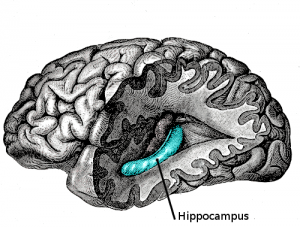Mapping the brain for targeted therapies
While the brain has been significantly studied and its various regions identified, a new study by researchers at the University of Southern California published in the journal Nature Neuroscience describes a detailed map of the hippocampus that holds promise for new treatments.
The hippocampus

Location of the hippocampus within the brain.
The hippocampus is located at the base of the brain and controls the transition from short to long-term memory as well as spatial memory. Humans and other mammals have two hippocampi, one on each side of the brain. The name hippocampus comes from the Greek word for seahorse, as the structure resembles the sea creature. The hippocampus is one of the first regions of the brain to show the effects of Alzheimer’s and other neurodegenerative disorders.
Scientists as cartographers
In the new study, Michael S. Bienkowski and his co-authors created a detailed map of the mouse hippocampus. The mouse brain is very similar to the human brain and thus represents a good model for the study of human brain functions and the diseases that affect it. With the aid of fluorescent tracers and 3D animation, the researchers showed structures, nerve connections and functions with high specificity and granularity. “It totally changes our understanding by combining a wiring diagram with gene expression of the mouse hippocampus,” Bienkowski said in a USC article.
Hong-Wei Dong, USC professor of neurology and director of USC’s Center for Integrated Connectomics, is the senior author on the paper and part of the Mouse Connectome Project, a USC-led effort that collects data about neural connections in the brain, sharing it publicly with researchers in more than 100 countries.
Neurodegenerative disorders affect millions
Alzheimer’s disease is the sixth leading cause of death for older people and the leading cause of dementia in the United States, according to the National Institute on Aging. According to the Centers for Disease Control (CDC), more than five million Americans are living with the disease.
The researchers hope that their work will benefit other investigators and lead to better treatments and hopefully cures of diseases such as Alzheimer’s.
Bienkowski states that this new hippocampal map “totally changes our understanding by combining a wiring diagram with gene expression of the mouse hippocampus. We see it doing different things, and this gives us a new way to understand how the whole thing works together. This should have a very profound and broad impact.”
Do you conduct neuroscience research? Visit Kerafast.com to view our wide range of reagents for neuroscience research, including reagents for Alzheimer’s disease, cell lines and antibodies.


